The former Apollo 8 astronaut best known for taking the iconic “Earthrise” photo, who died last month while piloting a plane over the waters off Washington state, was doing a flyby near a friend's house when the fatal accident occurred, federal authorities said Tuesday.
William Anders, whose “Earthrise” photo showed the planet as a shadowed blue marble from space in 1968, had texted a friend to say he planned to do a flyby near her house on the western shore of Orcas Island, the National Transportation Safety Board said in its preliminary report.
The friend said Anders' flybys were not unusual, according to the NTSB. She said that he typically did two flybys, and while he sometimes rocked the airplane wings, "he never performed any kind of aerobatic maneuvers.”
Around 11:37 a.m. on June 7, the friend began to hear the “familiar” noise of his airplane, the NTSB said. Shortly after, she saw the older-model Beech A45 overhead traveling north along the shore in front of her house.
She briefly lost sight of the plane as it flew behind trees. When she saw it come back into view it was heading south and flying over the water. After it passed by, she saw the left wing drop and thought it was part of his routine. But the wing continued to drop as the plane plummeted toward the water below.
At the same time, another witness on the same shoreline north of Anders' friend's home, was using his phone to film the vintage airplane passing by, the NTSB said. Over the course of the video, the plane can be seen plunging toward the water in a near vertical dive before its right wingtip strikes the water.
The friend and the person who took the video were the only two witnesses to come forward, the NTSB said.
The plane sank near the north end of Jones Island, which is off the western shore of Orcas Island, San Juan County Sheriff Eric Peter said. The body of the 90-year-old Anders was recovered that afternoon.
Most of the wreckage was recovered in the week following the crash and has been stored for further examination, the agency said.
Anders' “Earthrise” photograph, the first color image of Earth from space, is one of the most important photos in modern history for the way it changed how humans viewed the planet. The photo is credited with sparking the global environmental movement for showing how delicate and isolated Earth appeared from space.
Anders, a retired major general, has said the photo was his most significant contribution to the space program along with making sure the Apollo 8 command module and service module worked.
His son, retired Air Force Lt. Col. Greg Anders, told The Associated Press after his father's death that the family was devastated.
“He was a great pilot and we will miss him terribly," he said.
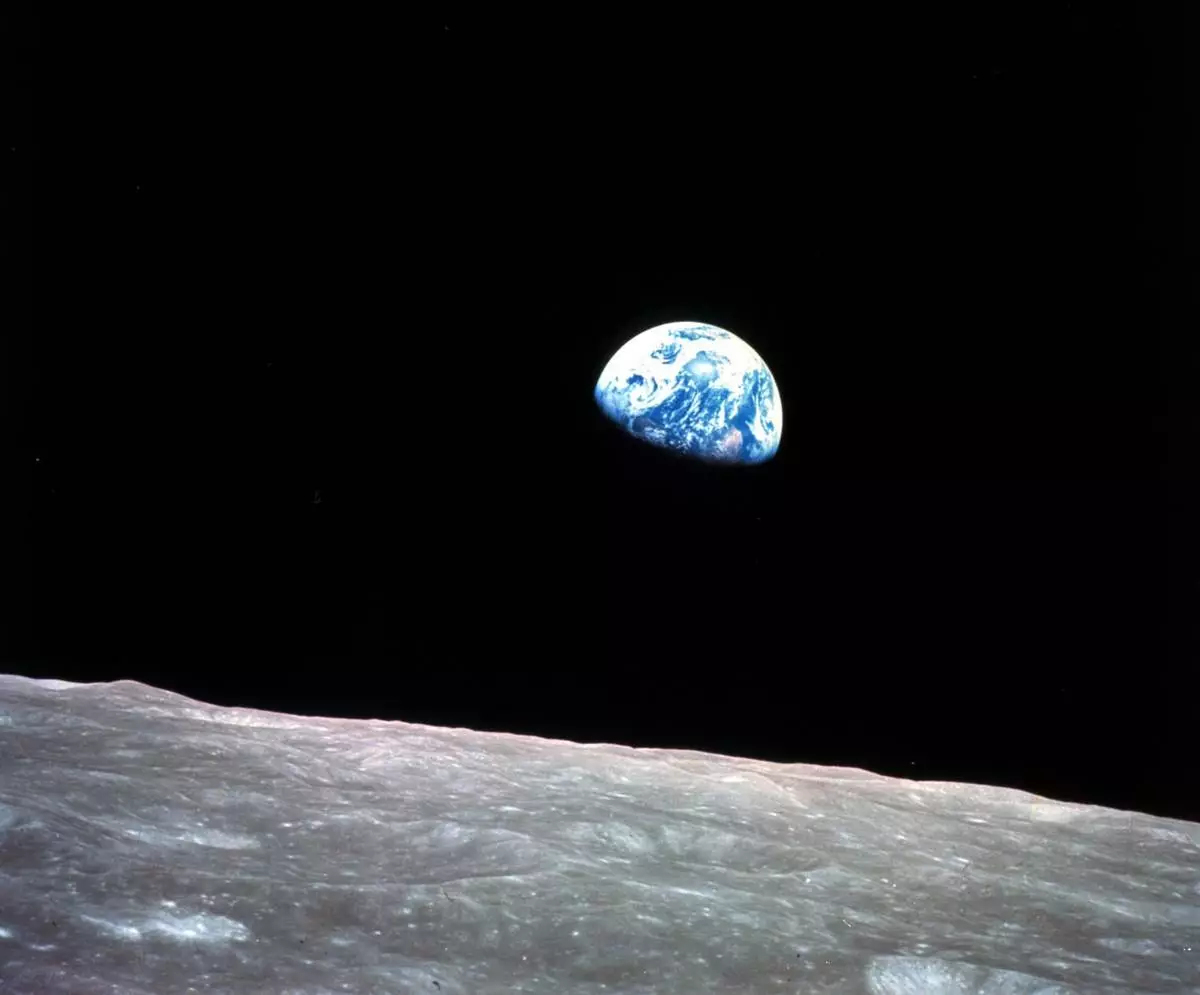
FILE - This photo made available by NASA shows the Earth behind the surface of the moon during the Apollo 8 mission, Dec. 24, 1968. The National Transportation Safety Board has released its preliminary investigation into the fatal plane crash of former astronaut William Anders. (William Anders/NASA via AP, File)
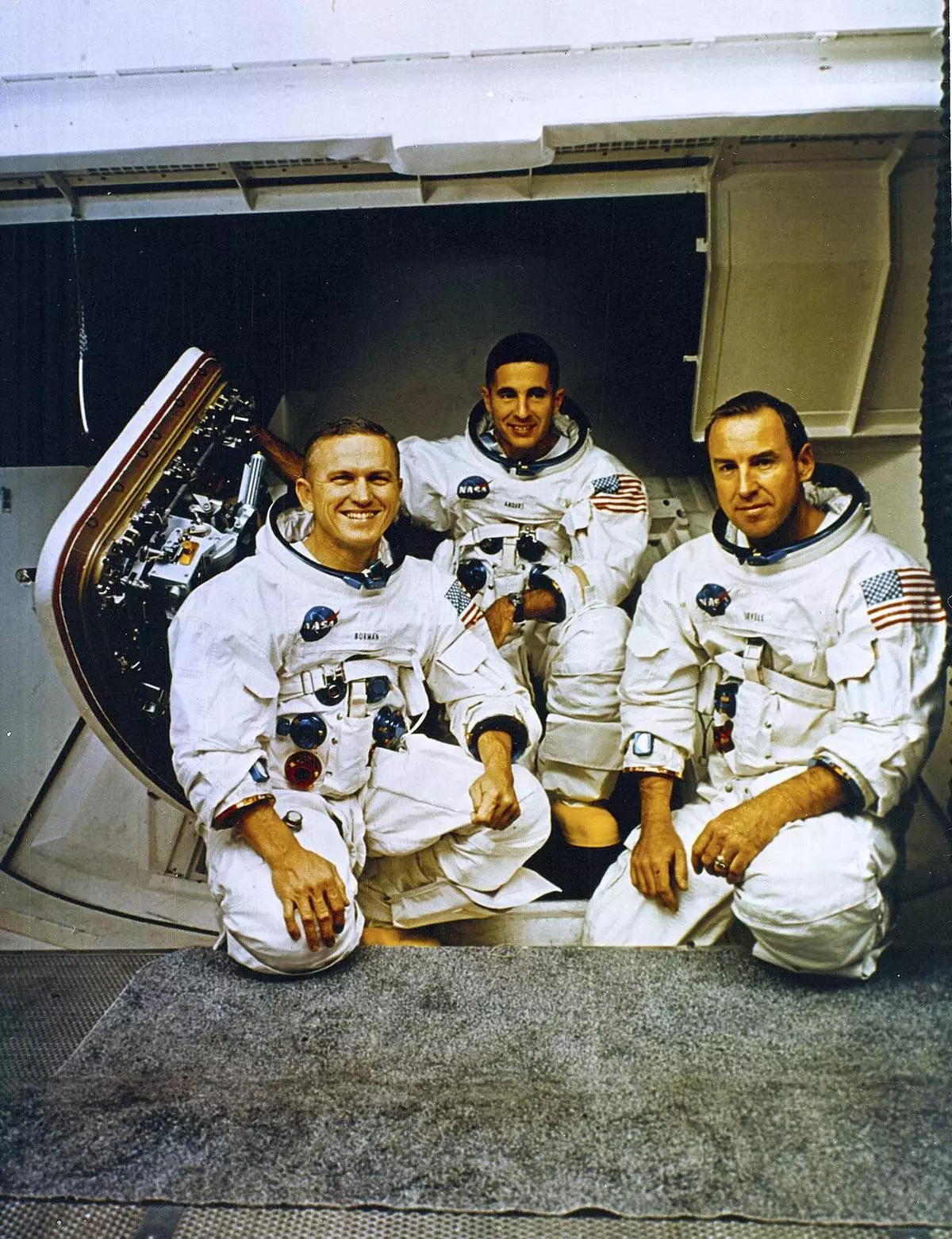
In this image provided by NASA, the Apollo 8 Crew from left, Frank Borman, commander; William Anders, Lunar Module Pilot; and James Lovell, Command Module pilot, pose in front of the Apollo mission simulator during training, Nov. 21, 1968. The National Transportation Safety Board has released its preliminary investigation into the fatal plane crash of the former astronaut. (NASA via AP)

William Anders poses on Sept. 9, 1967, for his official NASA portrait in this image provided by NASA. The National Transportation Safety Board has released its preliminary investigation into the fatal plane crash of the former astronaut. (NASA via AP)
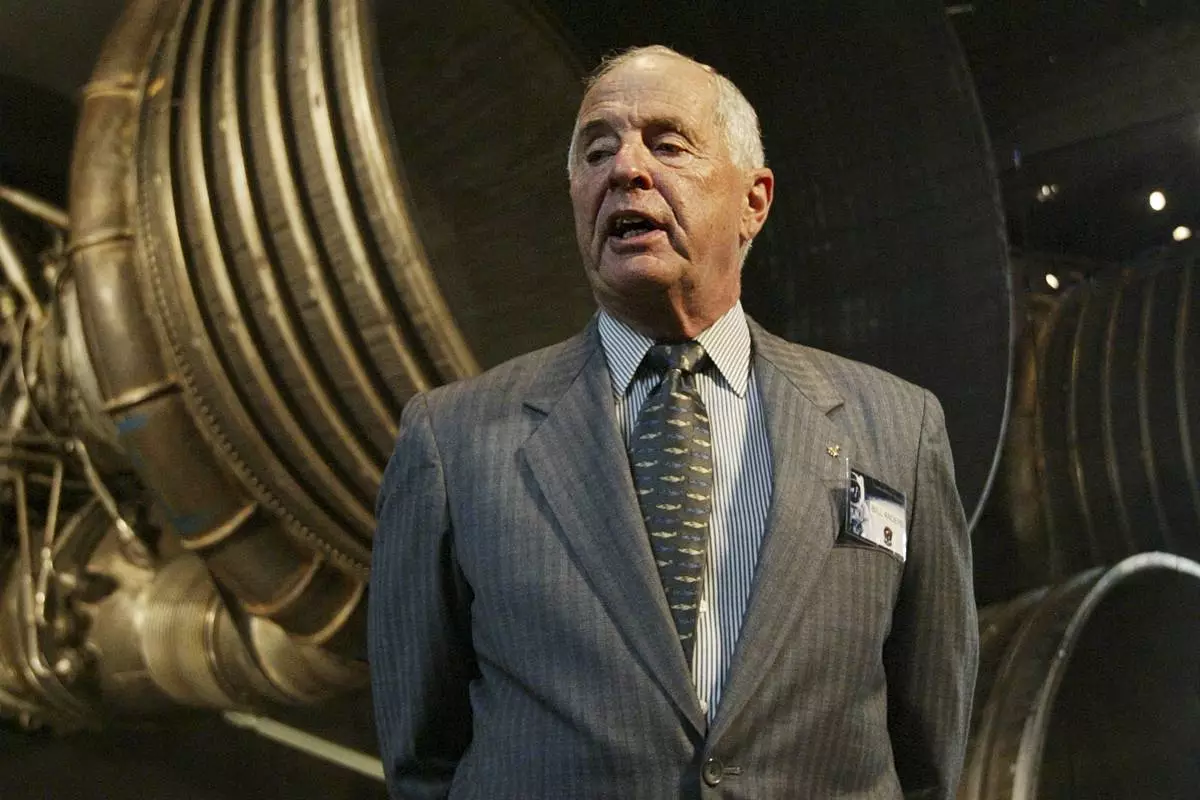
FILE - Apollo 8 Lunar Module Pilot Gen. William Anders, speaks to reporters in front of the Saturn 5 Aft End, the F-1 rocket engines of the first stage of the Apollo 11/Saturn 5 launch vehicle ,July 20, 2004, in Washington. The National Transportation Safety Board has released its preliminary investigation into the fatal plane crash of the former astronaut. (AP Photo/Manuel Balce Ceneta, File)
GENEVA (AP) — The United Nations and partners say more migrants and refugees in Africa are heading northward toward the Mediterranean and Europe, crossing perilous routes in the Sahara where criminal gangs subject them to enslavement, organ removal, rape, kidnapping for ransom and other abuses.
A report released Friday by the U.N. refugee and migration agencies and the Mixed Migration Centre research group estimated that land routes in Africa are twice as deadly as the sea lanes across the Mediterranean — which is the deadliest maritime route for migrants in the world.
The report said new conflict and instability in countries including Mali, Burkina Faso and Sudan have been behind a rise in the number of journeys toward the Mediterranean. But Nigeria, Ivory Coast and Guinea were the top countries of origin of migrants.
It comes as many politicians in Europe and beyond, in an important election year, have fanned or drawn support from anti-immigrant sentiment. But conflict, economic strife, repression and the impact of climate change in many countries in the developing world has fanned the flow of migrants across borders nonetheless — at the risk of physical abuse and death.
“Refugees and migrants are increasingly traversing areas where insurgent groups, militias and other criminal actors operate, and where human trafficking, kidnapping for ransom, forced labor and sexual exploitation are rife,” according to a summary of the report, which follows up on a similar study four years ago.
The authors admit there are no comprehensive statistics on deaths on the land routes in Africa. But refugee agency UNHCR has cited a more-than-tripling of the number of refugees and asylum-seekers in Tunisia — a key transit country for migrants aiming to get to Europe — between 2020 and 2023.
The report aimed to spotlight the dangers of land routes that lead to the Mediterranean, which was crossed by over 72,000 migrants and refugees in the first half of this year, and where 785 people have died or gone missing over those six months, according to UNHCR figures.
UNHCR special envoy Vincent Cochetel, citing accounts from some migrants and refugees who survived, said some smugglers dump sick people off pickup trucks ferrying them across the desert, or don't go back to retrieve others who fall off.
"Everyone that has crossed the Sahara can tell you of people they know who died in the desert, whereas you interview people in Lampedusa: Not that many people will tell you about people they know who ... died at sea,” he said, alluding to an Italian island in the Mediterranean.
The U.N.'s International Organization for Migration reported earlier this year that more than 3,100 people died on the Mediterranean crossing last year.
The authors of the report, which drew on testimonies from over 31,000 people, said international action has been inadequate and pointed to “huge gaps” in protection and help for people making the perilous journey.
“In total, 1,180 persons are known to have died while crossing the Sahara Desert for the period January 2020 to May 2024, but the number is believed to be much higher,” it said.
The risk of sexual violence, kidnapping and death was reported by higher percentages of migrants questioned for the report compared to the previous one in 2020, and Algeria, Libya and Ethiopia were considered by respondents as the most dangerous.
The teams have tallied hundreds of cases of organ removals — a practice that has happened for years, Cochetel said. Sometimes, migrants agree to such removals as a way to earn money.
“But most of the time, people are drugged and the organ is removed without their consent: They wake up, and a kidney is missing,” he said.
Libya has emerged as a primary transit point for migrants fleeing war and poverty in Africa and the Middle East. In March, authorities discovered a mass grave containing the bodies of at least 65 migrants in the deserts of western Libya.
Follow AP’s global migration coverage at https://apnews.com/hub/migration
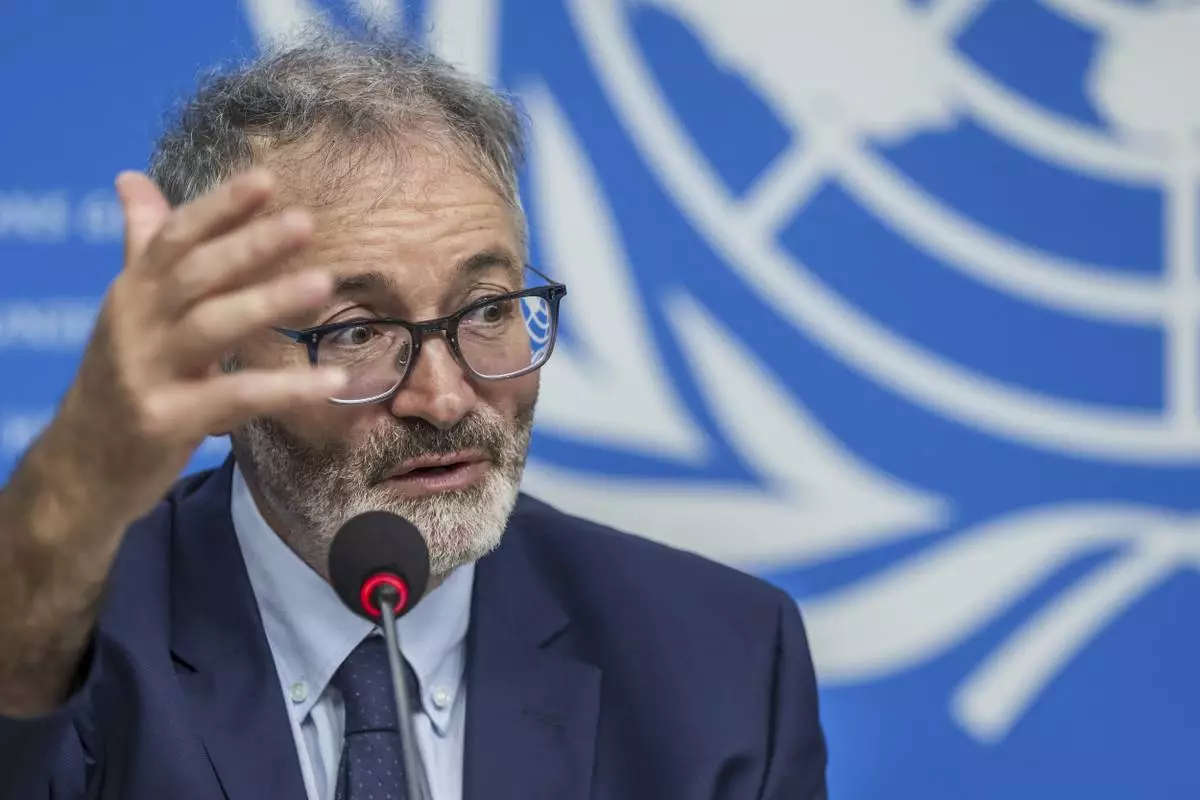
Vincent Cochetel, UNHCR special envoy for the Western & Central Mediterranean Situation, speaks about the launch of new UNHCR / IOM /MMC report on risks faced by refugees and migrants on the Central Mediterranean route during a press conference at the European headquarters of the United Nations in Geneva, Switzerland, Thursday, July 4, 2024. (Martial Trezzini/Keystone via AP)
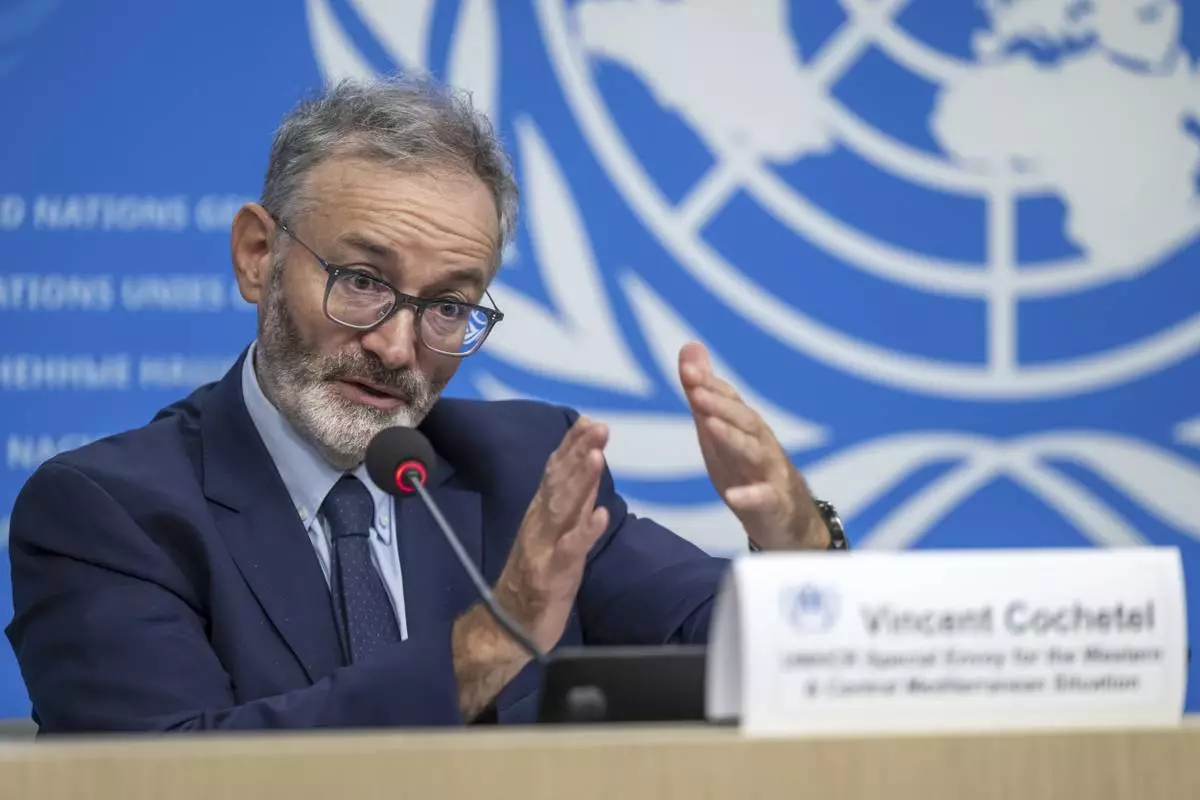
Vincent Cochetel, UNHCR special envoy for the Western & Central Mediterranean Situation, speaks about the launch of new UNHCR / IOM /MMC report on risks faced by refugees and migrants on the Central Mediterranean route during a press conference at the European headquarters of the United Nations in Geneva, Switzerland, Thursday, July 4, 2024. (Martial Trezzini/Keystone via AP)
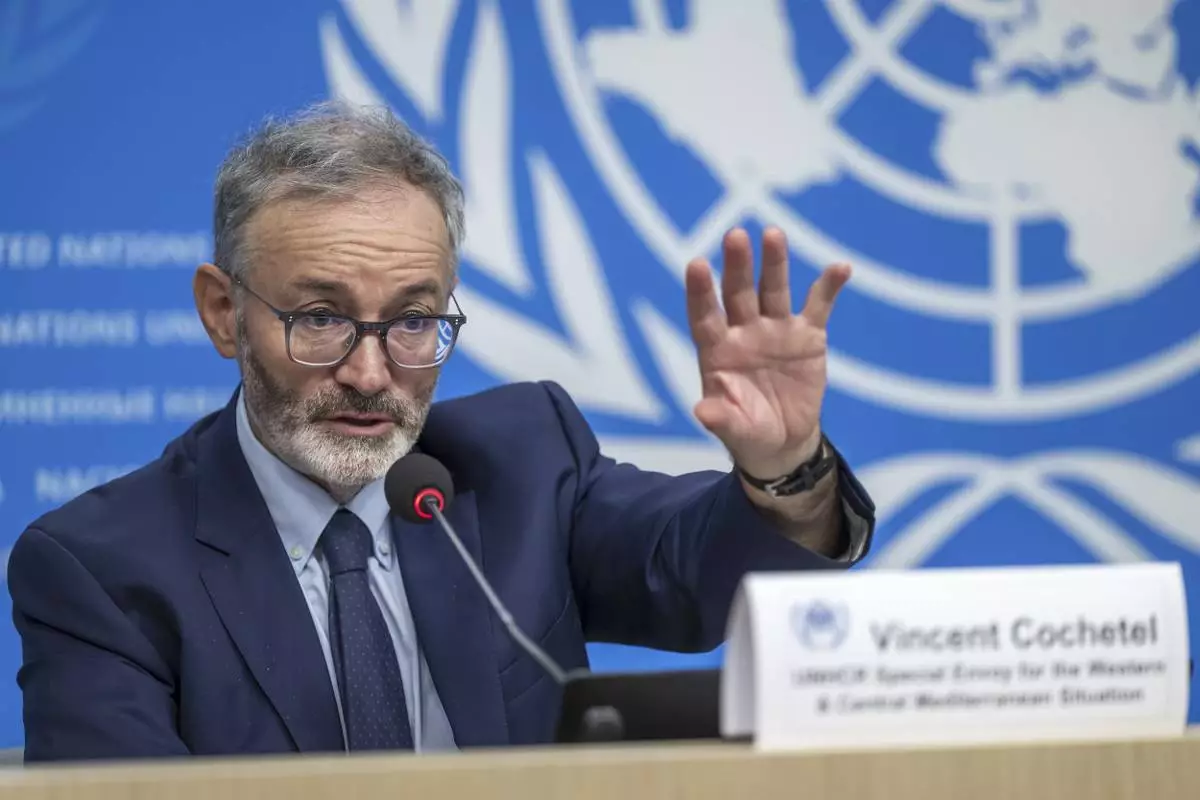
Vincent Cochetel, UNHCR special envoy for the Western & Central Mediterranean Situation, speaks about the launch of new UNHCR / IOM /MMC report on risks faced by refugees and migrants on the Central Mediterranean route during a press conference at the European headquarters of the United Nations in Geneva, Switzerland, Thursday, July 4, 2024. (Martial Trezzini/Keystone via AP)
















